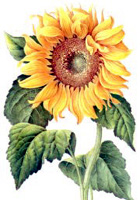 Crab, ground pork, and cabbage dumplings
Crab, ground pork, and cabbage dumplings
Napa cabbage is a versatile Asian green used in salads, soups, stir-fries, and is even pickled (think: a spicy Korean
kimchi). The
napa variety is one of two main types of what is commonly known as Chinese cabbage. Chinese cabbages are heading cabbages with a mild flavor. The
Michihili type is a tall cabbage, about 12 inches tall, and shaped similarly to romaine lettuce. The
napa variety is shorter and chunkier. Both types are enjoyed by cooks from virtually all Asian countries because of its delicate flavor and high water content. Though the outer leaves are sturdier and similar to a regular cabbage, most of the inner leaves are better compared to a heading lettuce.
Here's a photo from Wikipedia...I didn't copy it here because although the
napa cabbage looks good, I think the quality of the photo is poor.
Growing Your Own Napa Cabbage...Napa cabbage is a cool-weather crop and grows best in temperatures about 60-70 degrees Fahrenheit. Cold snaps or long hot days can cause the plant to bolt. To plant in the spring, start seeds indoors 4-5 weeks before your last frost date. To prevent bolting, be sure there is no chance of frost before transplanting. Set plants about 18 inches apart. To plant in the fall, direct sow seeds about three months before your first frost date. Plant seeds about 1/2 inch deep. When seedlings have four true leaves and are few inches high, thin to about 18 inches. The
thinnings can be used in a salad or stir fry. Be sure to keep the cabbages well-watered.
Napa cabbage can be harvested when it reaches any desired usable size. When mature, fall planted cabbage can tolerate some cold weather. Though it will slow or stop growing, the fall planted
napa cabbage can wait for you in the garden until ready for use. Harvested
napa cabbage can be stored in a cold shed, garage or basement for up to two or three months. This versatile leafy green can also be frozen.
If You're Buying...If you're buying, you shouldn't have a very difficult time locating this vegetable. It is grown in many parts of the United States during the spring and fall, and is also
available shipped from California and Hawaii, where it is grown year round. Many farmer's markets and most Asian supermarkets will carry
napa cabbage. Select as you would select any heading cabbage. Look for crisp, green leaves. A mature
napa cabbage will be about 8 inches thick and a bit taller than it is wide.
***********************************************************
Chinese families will use
napa cabbage year round in dozens of recipes. My father makes dumplings throughout the year, usually taking requests for the different filling combinations, both traditional and of his own creation. My favorite is his crab and ground pork dumplings. My cousins love his fish variation. My husband loves the flavor of leek and chopped pork, especially when they're hot. My sister, a vegetarian, loves the dumplings made
specifically for her with chopped beanthread noodles, wood ear, firm tofu and the familiar fragrance of sesame oil. Last weekend, my parents made another popular variety in celebration of Chinese New Year. Dumplings are often served among other symbolic dishes on Chinese New Year. Their resemblance to filled purses promises to bring wealth and success for the upcoming year. Often, my father will hide a (well-washed!) coin to the filling in one of the dumplings - bringing extra luck to the person fortunate enough to find it
among the hundreds of identical dumplings.
Like most cooks who make dumplings by hand, the recipe for the dumpling wrapper is not written, but guided by the texture of the dough and the years of experience. In the photos below, my father has separated the dough into little round pieces, flattened them, and rolled them out. Dumpling wrappers can also be purchased in Asian supermarkets. The recipe shown below is for my father's often-requested...
Crab, Pork, and Napa Cabbage Dumplings. Because the
napa cabbage is so mild in taste, it is hard to even detect its presence. It is likely that the high water content of the cabbage contributes to the juiciness of the dumpling that everyone raves about.

The process is skilled and speedy - one hand rolls while the other turns the wrapper around and around until the wrapper is of consistent thinness and ready to stuff.
 Crab, Pork, and Napa Cabbage Dumplings
Crab, Pork, and Napa Cabbage Dumplings- 1 bunch Chinese cilantro, chopped fine
- 2 pounds napa cabbage, chopped very fine with excess water drained and squeezed out
- 6 spring onions chopped very fine
- 1/2 ounce ginger, minced
- 1/2 pound crabmeat, picked through and chopped
- 1 1/2 pounds ground pork, minced
- 4 sea cucumbers, chopped (sea cucumbers are dried and need to be rehydrated overnight)
- 1 Tbsp brandy
- 1/2 cup soy sauce
- 1/4 cup corn oil
- 1/2 cup sesame oil
- 1 cup water
- 1 Tbsp "Sweet Bean Sauce" (available canned in the Asian supermarket)
- 1 tsp sugar
- 1 Tbsp salt
- 1/2 tsp white pepper
To make the filling, mix all ingredients together and stir vigorously for several minutes. Fill all dumplings. In a wok or pan, heat water to a rapid boil. Drop dumplings in and immediately stir gently to prevent dumplings from sticking to the sides or each other. Boil in one layer, working with one batch at a time. Typically, the dumplings will be finished a couple of minutes after they float to the top. To check for doneness, you will have to be a true Chinese cook. Take out a burning hot dumpling and taste. The filling should be very juicy but cooked through and hot (I will give you the hint that it should take about 5-8 minutes or so).

In these photos above and below, the dumplings are being filled and one end is brought up to meet the other end, creating a filled purse. Notice the utensil my father is using. He made several of these little spoons from the split and sanded bamboo from his property.

In these photos above and below, he is tucking little pleats and then firmly pressing the ends together, taking care not to rip the delicate dumpling wrapper.

My father uses a piece of countertop designated for dumpling-making as his work surface. The flour is a special very fine Chinese white flour. The kids are around the table, no doubt waiting for a piece of "Play-doh" to play with as they wait for their dinner to be made. I am setting the table with small plates and dishes of dark vinegar (or balsamic vinegar) to dip the dumplings in. We all stay busy in anticipation of a delicious meal upcoming...






































 In these photos above and below, the dumplings are being filled and one end is brought up to meet the other end, creating a filled purse. Notice the utensil my father is using. He made several of these little spoons from the split and sanded bamboo from his property.
In these photos above and below, the dumplings are being filled and one end is brought up to meet the other end, creating a filled purse. Notice the utensil my father is using. He made several of these little spoons from the split and sanded bamboo from his property.






















